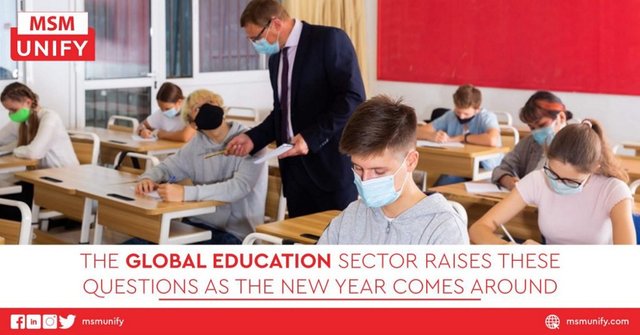
Many people are optimistic about the coming year of 2022. Many people believe that things will improve. However, the unfortunate reality is that the COVID-19 Pandemic is still ongoing.
Important Takeaways:
When the COVID-19 pandemic struck in March 2020, approximately 1.2 billion students were forced to miss class.
Students can now pursue International Education without leaving their home country.
Investments in e-learning are expected to reach $350 billion by 2025.
The global increase in COVID-19 cases, exacerbated by the new and more transmissible omicron variant, has many people wondering what the future holds. International education is one such industry. Recent events have raised some concerns about the future of education. Here are a few examples:
- Has the pandemic paved the way for hybrid learning?
Following the COVID-19 outbreak in March 2020, over 1.2 billion students were forced to attend school via computer. Distance or online learning became the norm overnight. Indeed, the $18.66 billion in edtech investments made in 2019 are expected to rise to $350 billion by 2025.
However, international education is all about the experience—Studying in a Foreign Country and meeting new people from various cultures and backgrounds. On the other hand, virtual learning has enabled students from other countries to obtain an international education without leaving their homes.
So the question is, will it last after the pandemic?
- Has the pandemic brought about diversification and internationalization?
While there is no denying that the pandemic has closed borders and prevented many International Student from travelling to study, the ongoing health crisis may have had a significant impact on education.
Panellists noted in an August webinar hosted by the Association of Indian Universities, the United States Embassy in New Delhi, and Harvard University that the pandemic had paved the way for more students to pursue international education without leaving their home or country.
This has essentially resulted in educational institutions rethinking their teaching methods, taking e-learning or distance learning into account.
Previously, online learning was a one-way street in which a student would watch a video presentation to learn. Nowadays, the classroom has given way to the online environment.
- Is all this merely a trend?
Of course, the only way to answer this question is through time and the events that will occur. However, if the trend toward remote work and learning, mobile learning, virtual reality and artificial intelligence, which began in March 2020, continues into 2022 as predicted, this may simply be an indication of where the education sector is headed.
Until then, the rest of the world, particularly the global education sector, is waiting for an answer.